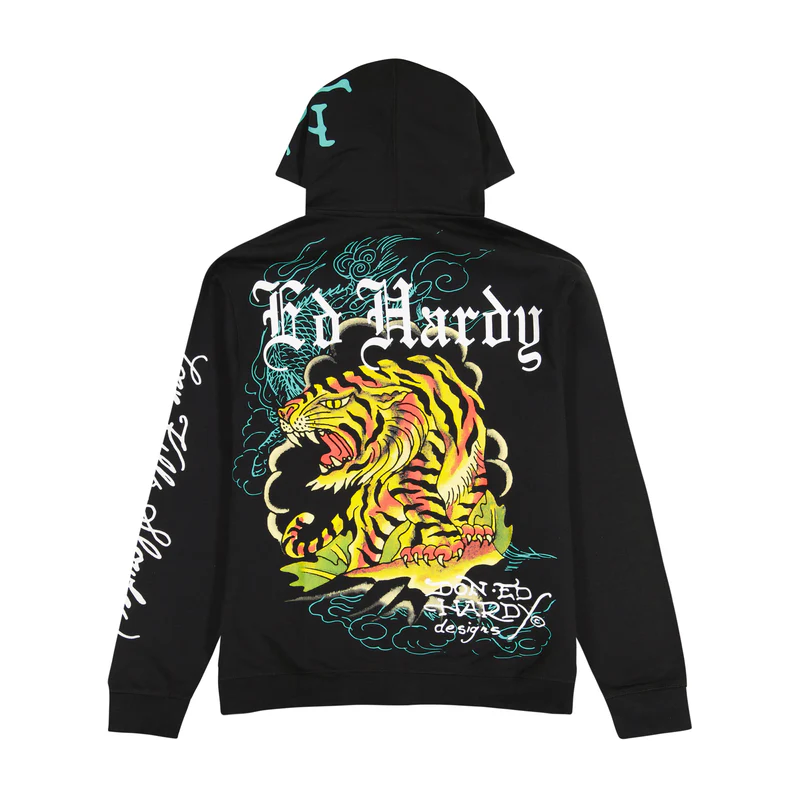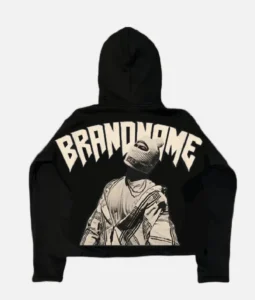The Evolution of Ed Hardy’s Tattoo-Inspired Fashion Legacy
Ed Hardy is a name that became synonymous with bold, expressive, and rebellious fashion during the early 2000s. Drawing from tattoo artistry and street culture, the ed hardy jeans brand evolved into a global sensation, leaving an indelible mark on fashion. From the fusion of tattoo art with clothing to the brand’s cultural influence, the evolution of Ed Hardy’s tattoo-inspired fashion legacy is a fascinating story of creativity, controversy, and ultimate impact on the global fashion scene.
The Origins of Ed Hardy’s Art
Ed Hardy, the artist behind the name, began his career as a tattooist, gaining notoriety for his unique style that blended traditional Japanese techniques with modern American tattoo designs. His work was heavily influenced by bold lines, bright colors, and intricate imagery that often depicted skulls, roses, tigers, and dragons. Hardy’s tattoo art was more than just decoration; it was a form of self-expression that carried deep cultural and personal meanings. By embracing this art form, Hardy brought the world of tattoos into the mainstream, paving the way for its incorporation into fashion.
The Birth of Tattoo-Inspired Fashion
The evolution of Ed Hardy’s fashion legacy began when Hardy teamed up with French designer Christian Audigier in the early 2000s. Audigier saw potential in Hardy’s artwork and recognized that it could be transformed into a fashion statement. Together, they launched a clothing line that featured Hardy’s iconic tattoo designs on T-shirts, jackets, and accessories. The bold graphics and street-style aesthetic immediately resonated with a wide audience, particularly among young people looking to make a statement with their clothing. Ed Hardy’s tattoo-inspired fashion was born, merging the worlds of body art and apparel in a way that had never been done before.
The Rise to Fashion Fame
By the mid-2000s, Ed Hardy had become a household name in fashion. The brand’s rise to fame can be attributed to its strategic use of celebrity endorsements and its alignment with popular culture. Celebrities like Madonna, Britney Spears, and David Beckham were spotted wearing Ed Hardy designs, catapulting the brand into the spotlight. The tattoo-inspired apparel became a symbol of status and individuality, attracting not just celebrities but everyday consumers who wanted to stand out. The rise of reality TV shows like Miami Ink and LA Ink also contributed to the growing interest in tattoo culture, further boosting the brand’s visibility and appeal.
The Tattoo Culture Connection
One of the key reasons for Ed Hardy’s enduring legacy is its deep connection to tattoo culture. Tattoos, once considered taboo, were being embraced by mainstream culture, and Ed Hardy was at the forefront of this shift. The brand’s designs didn’t just mimic tattoo art—they embodied the rebellious spirit and personal expression that tattoos represented. This cultural connection allowed Ed Hardy to resonate with people who valued authenticity and individuality in their fashion choices. The brand offered a way to wear art on your sleeve—literally and figuratively—and became a symbol of self-expression.
Expansion Beyond Apparel
As Ed Hardy’s tattoo-inspired designs gained popularity, the brand expanded beyond apparel. Hardy’s art began appearing on a wide range of products, including footwear, fragrances, and even home décor. This expansion helped solidify the brand’s place in pop culture, as Ed Hardy became more than just a clothing line—it became a lifestyle. The tattoo-inspired aesthetic extended into all aspects of fashion and design, creating a cohesive brand identity that appealed to a broad audience. The brand’s growth reflected the widespread acceptance of tattoo art as not just a form of self-expression, but also a legitimate and desirable fashion statement.
The Controversies and Decline
Despite its initial success, the Ed Hardy brand faced its share of controversies and challenges. As the brand’s popularity grew, so did its association with celebrity culture and excess. Critics argued that the over-commercialization of the brand diluted its original artistic and rebellious spirit. By the late 2000s, the brand’s ubiquity had led to a sense of overexposure, and it became associated with gaudy, ostentatious fashion. Additionally, the rise of fast fashion and changing trends in streetwear meant that consumers were moving away from the bold, graphic-heavy designs that had once defined Ed Hardy.
The Legacy of Ed Hardy’s Fashion Revolution
While the Ed Hardy brand may have faced a decline in mainstream popularity, its impact on fashion remains undeniable. The brand revolutionized the way tattoo art was perceived in the fashion world, making it a legitimate and influential design element. Ed Hardy’s legacy lives on in the continued popularity of tattoo-inspired clothing, as well as in the broader acceptance of tattoos as a form of personal and artistic expression. The brand’s influence can be seen in the work of contemporary designers who continue to experiment with bold graphics, streetwear aesthetics, and cultural references in their collections.
The Return of Y2K Fashion
In recent years, there has been a resurgence of interest in early 2000s fashion, often referred to as Y2K style. As a key player in the fashion trends of that era, Ed Hardy has seen a renewed interest from both nostalgic consumers and a new generation of fashion enthusiasts. The bold, colorful designs that once defined the brand are being embraced again, particularly in streetwear and vintage fashion circles. This resurgence highlights the cyclical nature of fashion and the enduring appeal of Ed Hardy’s tattoo-inspired designs.
The Future of Tattoo-Inspired Fashion
As fashion continues to evolve, Ed Hardy’s influence on the industry remains significant. The fusion of tattoo art and fashion that the brand pioneered has opened doors for other designers to explore similar aesthetics. Tattoo-inspired fashion has become a staple in streetwear, and its influence can be seen in everything from high fashion runways to fast fashion retailers. The future of tattoo-inspired fashion is likely to continue evolving, with new interpretations of body art and personal expression making their way into clothing and design.














Post Comment